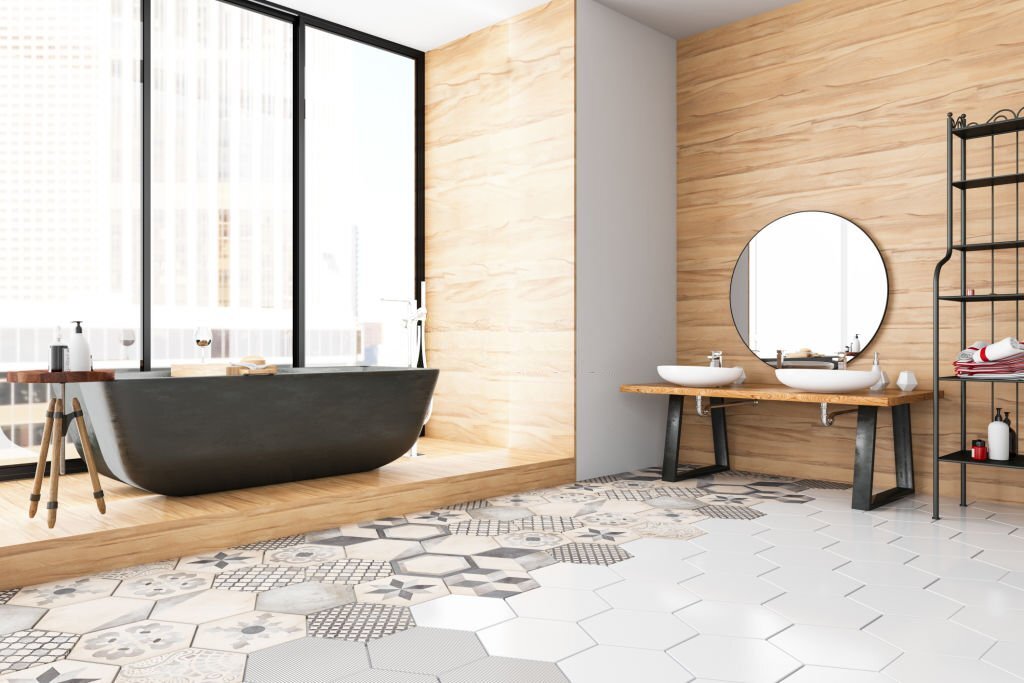More than ever, it is now that we need to put in much more efforts into what we eat and how we live, if we want to live in a world where nature is at its best. Opting for eco-friendly options is of utmost importance at the moment, lest we wait for things to become irreversible. One of the firsts to feature in this sequence of lifestyle changes is the material that we use on a large scale, which has the ability to affect the environment due to the use of its scale.
Case in point: the flooring, wall tiling, or just other decor items around most of our homes. The tile that stands tall in this eco-friendly quest is ceramic tile. Besides its popularity, efficient performance, and longevity, this tile is also sustainable. With that in mind, let’s see how ceramic tile is really good for the environment.
How It Benefits The Environment?
In the Environmental Product Declaration (EPD) report on the ceramic tile’s impact on the environment and its life cycle of 75 years, it was reported that its life cycle includes construction, production, maintenance, use, replacement, refurbishment, and the actual end of its life. In short, the EPD tells us how much of an environmental footprint the ceramic tile industry leaves on North America, and the world in general.
However, it was found that this impact is not that significant. In fact, the ceramic tile contributes less to global warming than any other flooring option available. Moreover, it also has the lowest ozone depletion potential compared to other materials.
So now you know which tile to opt for if you plan to redecorate your kitchen backsplash (or even the flooring for that matter).
Ceramic Tile Environmental Advantages
-
Naturally Occurring Raw Material
Naturally occurring materials like clay and minerals are used in the manufacturing of ceramic tiles. The fact that most of them are sourced within close proximity of the manufacturing facilities is of great advantage. This significantly decreases the use of energies and fuels, which considerably add up the carbon footprint if shipping is also considered in the picture.
-
Life Cycle Benefits
Ceramic tiles are popular for their excellent durability. For the environment, this is of great interest as a longer life cycle means that you won’t have to change the flooring for a long time. Consequently, you tend to do less replacements with such tiles, which leads to better efficiency and low wastage in terms of environment.
-
Energy Efficiency
Ceramic tile is also energy efficiet, meaning that the thermal mass of ceramic tile minimises the peak heating and cooling, which then moderates the temperature swings. Moreover, this also reduces the usage of HVAC systems like refrigerators or air conditioners. Ultimately, all of this considerably brings down your carbon footprint in turn.
-
Recycling and Reclamation
Several tile manufacturers these days offer a wide variety of products that includes pre and post-consumer cycled products. In fact, recovered waste like dust, powder, unfired scrap, and water are reincorporated into tile manufacturing again.
-
Clean Disposal
Ceramic tile is completely inert in nature, meaning that it is water insoluble. This property allows it to minimise the leaching of caustic liquids, making it safe for a clean fill in turn. Moreover, even in their ground form as well, they can be reused into making pavements and asphalt applications.
More than a choice, going green is the need of the hour. If you choose to go that way, you can start from your home itself. The flooring needs to be as close to the environment as possible, and ceramic tile is as green as it can get in your tile choices and purchases. Therefore, reach out to your nearest tile store and connect with tile experts to answer queries about the ceramic tile’s manufacturing, shipping, installation, and environmental effects.











